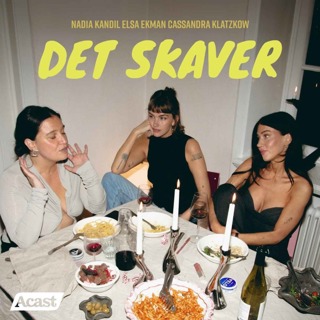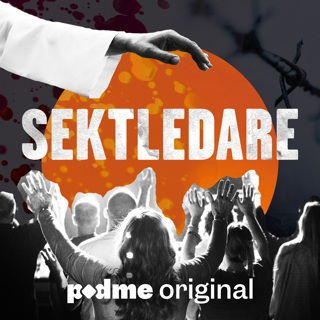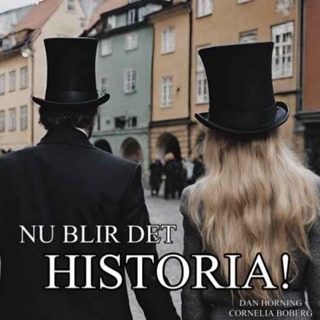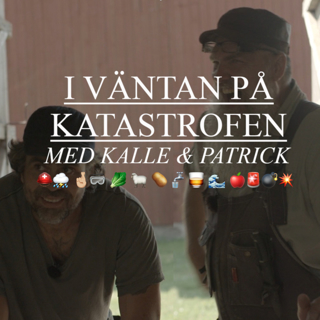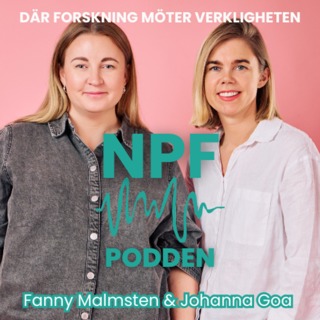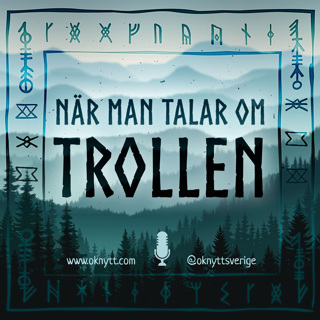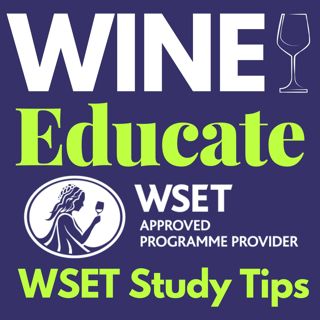
46. Taste This! Mini Wine Tastings You Can Do at Home: Tasting #2 - Apples
In this episode, we're focusing on a simple, sensory-rich exercise: exploring the aromas and flavors of apples and how they show up in wine. This is a foundational tasting skill for both students and casual tasters—green apple, yellow apple, and red apple skin are aroma notes that show up constantly in WSET assessments and real-world wine descriptions. Whether you're preparing for your WSET Level 3 exam or just want to sharpen your sensory recall, this exercise is for you. What You'll Learn in This Episode: Why apple aromas are so common in wine (and what influences them) How to set up a simple at-home tasting using three apples: green, yellow, and red Suggested wine styles that correspond to each apple profile A blind tasting method to improve your aroma recognition How to log flavor memory and build your personal sensory "data bank" Recommended Apples: Green Apple: Granny Smith Yellow Apple: Golden Delicious Red Apple: Gala, Honeycrisp, or Red Delicious Suggested Wines that correspond with the apples: Green Apple Wines: Chablis, NZ Sauvignon Blanc, Champagne (Blanc de Blancs), cool-climate Chenin Blanc, Grüner Veltliner Yellow Apple Wines: Warmer-climate Chardonnay (California, Mâcon, southern Burgundy), Alsace Pinot Gris, Viognier Red Apple Skin Wines: Cru Beaujolais (Gamay), Pinot Noir, Grenache/Garnacha Want the PDF? To get the downloadable setup guide for this tasting, join the newsletter www.wineeducate.com/newsletter-signup How to Stay Connected Resources & PDFs: Included in every Tuesday newsletter this summer Classes & Trips: You'll find updates on WSET offerings and our 2026 wine trips inside the newsletter Have a Question? Just hit reply. The emails come from me directly and I love hearing from you!
3 Juni 10min

45. Wine Study Tools: Aroma Kits – Study Hack or Splurge?
Resources & Links: Sign up for the Wine Educate Newsletter to access free PDFs from the Taste This! series, including setup instructions for each tasting activity: www.wineeducate.com/newsletter-signup How to Contact Us: Got a question or topic you'd like covered on the podcast? Send me an email joanne@wineeducate.com I'd love to hear from you! Episode Overview: Today we're talking about aroma kits—what they are, how they work, and whether you need one if you're studying for your WSET exams or simply trying to get better at smelling wine. A listener question from Christine in Bergen, Norway inspired this week's episode (thank you, Christine!). We'll explore popular aroma kits like Le Nez du Vin, look at their pros and cons, and I'll share my honest thoughts after revisiting both a brand-new kit and one that's over a decade old. In this episode, you'll learn: The difference between wine tasting kits and aroma kits How long aroma kits last—and what happens over time Why the Le Nez du Vin kit is so popular with students and educators What to consider before investing (spoiler: they're pricey!) How to train your nose using everyday items around the house Plus, I'll give you some practical ideas for building your own "aroma memory bank" using spices, fruit, flowers, and more. Spoiler: your spice drawer might be more powerful than you think. Key Takeaway: These kits are beautiful and helpful—but not essential. You already have a powerful tool: your own sense of smell. Training it just takes intention and practice. If you're enjoying this summer series, don't forget to subscribe and join our newsletter list for all the free materials mentioned on the show.
29 Maj 10min

44. Taste This! Mini Wine Tastings You Can Do at Home: Tasting #1 - Understanding Tannin
Resources & Links – Get the free PDF tasting guide: www.wineeducate.com/tea – Listen to Episode 9: How to Set Up Your Tasting Environment – Listen to Episode 18: What Is Tannin and Why Does It Matter? How to Contact Us Have a question or want to share how your tasting went? Just hit reply to the newsletter or email joanne@wineeducate.com. Follow along on Instagram or Threads: @wineeducate Episode Summary Welcome to the first installment of Taste This!, a new DIY mini wine tasting series released every Tuesday throughout the summer. In this episode, Joanne introduces the series and walks listeners through a hands-on tasting exercise designed to explore tannin—that drying sensation in wine that comes from grape skins, seeds, and oak. You'll learn how to prepare for your tasting using black tea and how to source three different red wines that represent low, medium, and high tannin levels. Whether you're tasting on your own or with friends, this is an approachable, practical way to build confidence in your palate and learn by doing. In this episode: – Why understanding tannin matters for wine students and enthusiasts – How to create a tea-based tasting to feel tannin in a controlled way – Suggested wine styles for each tannin level – How to use this tasting as a starting point for building your own tasting group – Tips for talking to your local bottle shop to source wines – Group discussion prompts to deepen the learning Don't forget: Download the free PDF guide that includes supply lists, setup instructions, and group prompts at www.wineeducate.com/tea.
27 Maj 12min

43. Thinking About Starting a Wine Tasting Group? Start Here
Resources & Links Join the newsletter to stay in the loop about classes, podcast extras, and upcoming wine trips: www.wineeducate.com/newsletter-signup How to Contact Us Questions or episode ideas? Email Joanne at joanne@wineeducate.com Show Notes It's summer—WSET Level 3 exams are done, school's winding down, and it's time to shift gears. In this episode, Joanne kicks off a new tasting-focused series with something fun and foundational: how to start your own wine tasting group, and why organizing your group around a theme makes it more meaningful (and more fun). Joanne shares stories from her early wine days in Brooklyn, creative ideas for tasting themes, and encouragement for anyone who's curious but hesitant. You don't need to be a wine expert to start a group—you just need a few bottles, a theme, and people who are up for learning (or sipping) together. In this episode: The value of tasting with a group—even if it's casual Classic themes: grape variety, region, winemaking style Creative ideas: • Wine & junk food pairings • Wine & poetry • Wine book club (bring what your favorite character would drink) How to build consistency into your group (without stressing over scheduling) Why summer is the perfect time to explore your palate and have a little fun This episode is the first in a multi-part series on tasting exercises you can do with your group, a friend, or even solo. Each one is designed to be affordable, accessible, and educational—no pretension required. Subscribe wherever you listen so you don't miss what's coming next.
22 Maj 7min

42. The Do's and Don'ts of Blind Tasting: A Guide for WSET Learners
Resources & Links Join the newsletter to stay in the loop about classes, podcast extras, and upcoming wine trips: www.wineeducate.com/newsletter-signup How to Contact Us Questions or episode ideas? Email Joanne at joanne@wineeducate.com Show Notes In this episode, Joanne breaks down the do's and don'ts of blind tasting—from how to set up a supportive, productive tasting group to why it matters for both students and enthusiasts. Whether you're preparing for the WSET exam or just curious about what's really in your glass, blind tasting sharpens your skills and challenges your assumptions. You'll learn how to create the right environment for learning (no "winesplaining" allowed), what makes a good blind tasting wine, and how to organize a group that's more about insight than intimidation. Topics covered include: The benefits of blind tasting: skill-building, unbiased evaluation, and surprise insights Ideal group size and setup tips (hint: 6–8 people is the sweet spot) Why everyone should taste the same bottle and use the same glassware How to avoid "winesplaining" and foster a more welcoming atmosphere Real examples of how blind tasting can challenge expectations (hello, lower-acid Chablis!) How we incorporate blind tasting into the Indie Wine Society in New Orleans If you've ever felt unsure about joining a blind tasting—or wanted to make your own more effective—this episode will help you reframe the practice as something thoughtful, fun, and confidence-building. Next episode, Joanne will share different ways to structure tasting groups and exercises you can use to make the most of your practice. Subscribe to the newsletter at www.wineeducate.com/newsletter-signup to stay updated on future episodes, WSET resources, and upcoming 2026 wine trips.
20 Maj 10min

41. Why Wine Trade Tastings Are Valuable to WSET Students
Resources & Links Join the newsletter to stay in the loop about classes, podcast extras, and upcoming wine trips: www.wineeducate.com/newsletter-signup How to Contact Us Questions or episode ideas? Email Joanne at joanne@wineeducate.com Show Notes In this episode, Joanne walks you through how to get the most out of a wine trade tasting—whether you're a buyer, a wine student, or just someone eager to connect more deeply with producers and their wines. You'll learn why trade tastings aren't just for industry pros, what to bring (yes, bring your own spit cup), and how to prepare ahead of time so you don't end up overwhelmed by a sea of bottles and missed opportunities. Joanne shares real stories, including one from her early days in New York, to show why a plan matters—and how better questions can lead to better connections. Topics covered include: Why trade tastings are valuable for WSET students How to prepare before you arrive (research, goal-setting, and more) Tips for what to bring with you, from spit cups to clipboards How to time your arrival depending on your tasting goals The importance of professionalism and respecting producers' time How to organize your notes and track what you've tasted Whether you're hoping to taste a special bottle, connect with a winemaker, or just sharpen your skills, this episode will help you make the most of every tasting room opportunity. Be sure to subscribe to the newsletter at wineeducate.com for updates on new classes and our 2026 wine travel experiences.
15 Maj 15min

40. WSET Wine Tasting Kits—Are They Worth It?
Resources & Links • Join the Wine Educate newsletter: www.wineeducate.com/newsletter-signup • View available courses & upcoming classes: www.wineeducate.com How to Contact Us Questions or feedback? Email Joanne at joanne@wineeducate.com Episode Summary In this episode, Joanne shares her firsthand impressions of a WSET-approved wine tasting sample kit designed for Level 1 - 3 students. With her colleague Nancy, she opens and tastes four of the ten samples—Mosel Riesling, Beaujolais-Villages, Bordeaux, and Marlborough Sauvignon Blanc—and evaluates them for quality, typicity, and educational value. Joanne discusses the pros (free shipping, carbon-neutral packaging, strong cost savings, and official WSET approval) and the cons (small portion sizes, heat sensitivity during shipping, and limited usefulness for study groups or food pairings). She also breaks down the pricing and structure of the Level 1, 2, and 3 tasting kits, with insights on who these kits are best suited for. If you're studying remotely or struggling to source benchmark wines in your area, this episode will help you decide if a tasting kit is the right fit for your wine studies. What We Cover • What's inside a WSET tasting kit and how they work • A mini review of four sample wines from the Level 1 kit • Joanne's scoring breakdown: what passed the "testable" benchmark • Pros: shipping, savings, sustainability, and peace of mind • Cons: small pours, heat risks, and group limitations • Who these kits are best for—and who might skip them • How Wine Educate plans to offer these on their website soon Get Involved Have you tried a tasting kit? Let us know your thoughts! Email joanne@wineeducate.com. And if you found this episode helpful, please share it with a fellow wine student or study group.
13 Maj 16min

39. What WSET Level 3 Students Wish They Knew Before Starting the Course
Resources & Links Join the Newsletter: wineeducate.com/newsletter-signup Launchpad: Level 3 Prep Course Begins May 11 — www.wineeducate.com/launchpad Contact Joanne: joanne@wineeducate.com In this episode, Joanne shares insights straight from the mouths of her current WSET Level 3 students during their second-to-last class — the sparkling wine session. As champagne was flowing and conversation opened up, she asked her students: "What do you wish you could tell yourself six months ago?" What followed was an honest and revealing conversation about what students underestimated, what they overlooked, and what they would absolutely do differently if they were starting Level 3 again. Whether you're just beginning your Level 3 journey or are deep in the study trenches, this episode is full of practical advice and reflection from students who are almost at the finish line. In This Episode: The 5 Things Level 3 Students Wish They Knew Sooner The 200-Hour Study Commitment Is Real Students acknowledged they underestimated how much time was truly required and wished they had started preparing earlier. The Study Group Never Happened — and They Regret It Despite Joanne's encouragement, many didn't follow through with forming a study group, and felt the lack of peer accountability. They Weren't Refreshed on Level 2 Knowledge The importance of entering Level 3 with a firm grasp of Level 2 material can't be overstated. It's foundational and necessary. Class Participation Requires Preparation Level 3 isn't a lecture—it's interactive. Students need to come prepared and speak up, because participation cements understanding. They Didn't Understand the Importance of Linking Concepts Early Many didn't realize until halfway through that everything ties back to climate, geography, and production methods. Grasping this early makes the course far more manageable. Why This Matters Joanne reminds us that the WSET Level 3 pass rate hovers around 57%—and that's simply not good enough. The tools, structure, and mindset to succeed are available, and this podcast (along with the Launchpad course) is designed to help students walk in the door better prepared. Coming Soon A review of a brand-new tasting kit Joanne and Nancy tried An honest look at aroma kits: are they worth the money? More practical tools and strategies for wine students Have a topic you want Joanne to cover? Send her an email at joanne@wineeducate.com — she'd love to hear from you.
8 Maj 9min



